19 results in Dolciani Mathematical Expositions
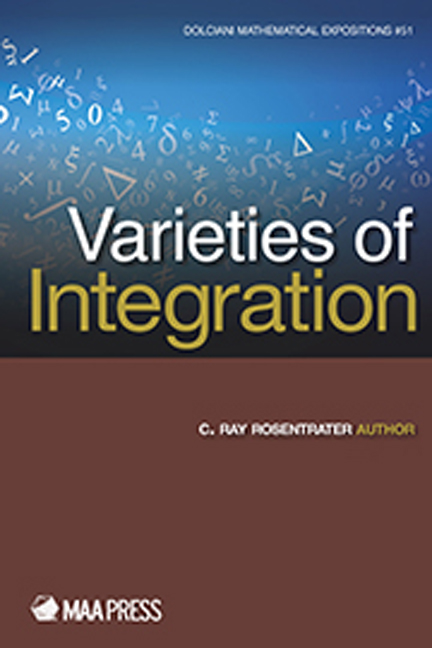
Varieties of Integration
-
- Published by:
- Mathematical Association of America
- Published online:
- 26 May 2017
- Print publication:
- 01 December 2015
-
- Book
- Export citation

Linear Algebra Problem Book
-
- Published by:
- Mathematical Association of America
- Published online:
- 05 October 2013
- Print publication:
- 01 January 1995
-
- Book
- Export citation

New Horizons in Geometry
-
- Published by:
- Mathematical Association of America
- Published online:
- 05 July 2013
- Print publication:
- 15 November 2012
-
- Book
- Export citation
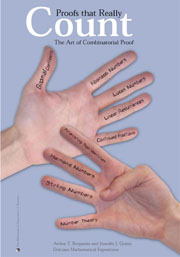
Proofs that Really Count
- The Art of Combinatorial Proof
-
- Published by:
- Mathematical Association of America
- Published online:
- 05 July 2013
- Print publication:
- 01 January 2003
-
- Book
- Export citation
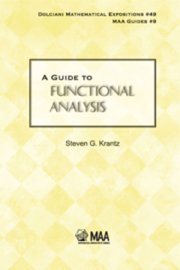
A Guide to Functional Analysis
-
- Published by:
- Mathematical Association of America
- Published online:
- 05 May 2013
- Print publication:
- 15 April 2013
-
- Book
- Export citation
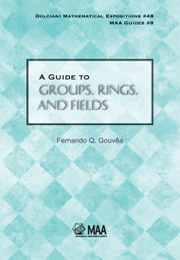
A Guide to Groups, Rings, and Fields
-
- Published by:
- Mathematical Association of America
- Published online:
- 05 April 2013
- Print publication:
- 30 November 2012
-
- Book
- Export citation

A Garden of Integrals
-
- Published by:
- Mathematical Association of America
- Published online:
- 05 April 2012
- Print publication:
- 01 June 2007
-
- Book
- Export citation

A Guide to Advanced Linear Algebra
-
- Published by:
- Mathematical Association of America
- Published online:
- 05 January 2012
- Print publication:
- 01 January 2011
-
- Book
- Export citation
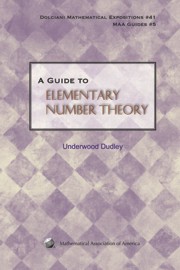
A Guide to Elementary Number Theory
-
- Published by:
- Mathematical Association of America
- Published online:
- 05 January 2012
- Print publication:
- 01 August 2009
-
- Book
- Export citation
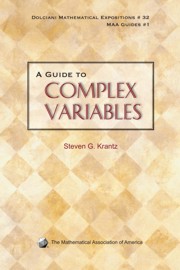
A Guide to Complex Variables
-
- Published by:
- Mathematical Association of America
- Published online:
- 05 January 2012
- Print publication:
- 01 June 2008
-
- Book
- Export citation
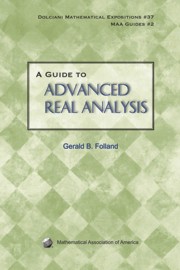
A Guide to Advanced Real Analysis
-
- Published by:
- Mathematical Association of America
- Published online:
- 05 January 2012
- Print publication:
- 01 June 2009
-
- Book
- Export citation

Sink or Float?
- Thought Problems in Math and Physics
-
- Published by:
- Mathematical Association of America
- Published online:
- 05 January 2012
- Print publication:
- 01 June 2008
-
- Book
- Export citation

When Less is More
- Visualizing Basic Inequalities
-
- Published by:
- Mathematical Association of America
- Published online:
- 05 January 2012
- Print publication:
- 01 January 2009
-
- Book
- Export citation

A Guide to Real Variables
-
- Published by:
- Mathematical Association of America
- Published online:
- 05 January 2012
- Print publication:
- 01 June 2009
-
- Book
- Export citation

A Guide to Topology
-
- Published by:
- Mathematical Association of America
- Published online:
- 05 January 2012
- Print publication:
- 01 August 2009
-
- Book
- Export citation

Icons of Mathematics
- An Exploration of Twenty Key Images
-
- Published by:
- Mathematical Association of America
- Published online:
- 26 October 2011
- Print publication:
- 02 August 2011
-
- Book
- Export citation

A Guide to Plane Algebraic Curves
-
- Published by:
- Mathematical Association of America
- Published online:
- 26 October 2011
- Print publication:
- 02 August 2011
-
- Book
- Export citation
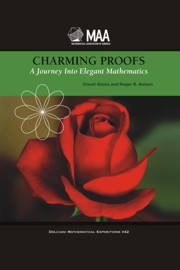
Charming Proofs
- A Journey into Elegant Mathematics
-
- Published by:
- Mathematical Association of America
- Published online:
- 26 October 2011
- Print publication:
- 01 August 2010
-
- Book
- Export citation

Mathematics and Sports
-
- Published by:
- Mathematical Association of America
- Published online:
- 26 October 2011
- Print publication:
- 01 August 2010
-
- Book
- Export citation


